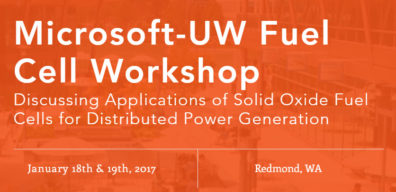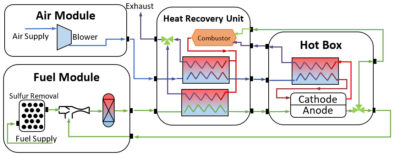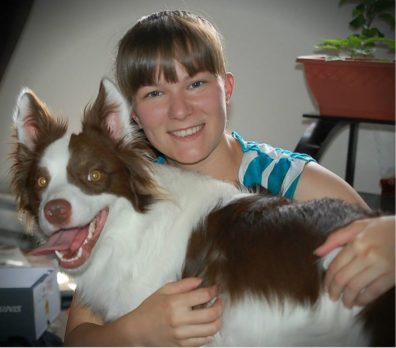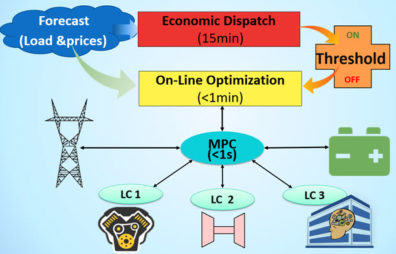Nate Royer presents at ASME conference on Energy and Sustainability
dustin.mclartyNate presented the latest updates on high pressure SOFC testing to our colleagues at ASME. Check out his presentation here.
Ryan Hamilton presents at ASME conference on Energy and Sustainability
dustin.mclartyCheck out Ryan’s exciting work on high pressure electrolysis! Could this be the future direction of solid oxide cells? Check out his presentation here.
Welcome John Drazin!
dustin.mclarty CESI lab welcomes John Drazin for a two-year post-doc. John comes to WSU from the Naval Research laboratory after earning his PhD in Materials Science at UC Davis. We are excited to combine his knowledge in the synthesis of ultra-fine zirconia nanopowders to our challenges in high pressure solid oxide fuel cells.
CESI lab welcomes John Drazin for a two-year post-doc. John comes to WSU from the Naval Research laboratory after earning his PhD in Materials Science at UC Davis. We are excited to combine his knowledge in the synthesis of ultra-fine zirconia nanopowders to our challenges in high pressure solid oxide fuel cells.
CESI lab awarded ARPA-E INTEGRATE project
dustin.mclartyDustin McLarty, a Ph.D. in WSU’s School of Mechanical and Materials Engineering, received a $678,014 grant from the U.S. Department of Energy’s Advanced Research Projects Agency – Energy to further hybrid power systems research.
By developing hybrid power systems using pressurized solid oxide fuel cells, McLarty’s proposed system design will increase the flexibility of the system during operation and lowers costs while still exceeding the DOE’s efficiency targets. If successful, this new hybrid power system would bridge the natural gas powered energy industry of today with the all-renewable energy systems of the future.
“The difference between a traditional fuel cell and the solid oxide fuel cell is what you can do with it, such as co-producing hydrogen and natural gas,” McLarty explained. “This makes it a technology that works as a generator today and grid scale energy storage for renewable energy in the future.”
This grant is part of the DOE’s Innovative Natural-Gas Technologies for Efficiency Gain in Reliable and Affordable Thermochemical Electricity-Generation (INTEGRATE). INTEGRATE seeks to build highly flexible and efficient energy solutions to dramatically increase grid efficiency, reduce cost and add resilience. WSU is one of eight institutions that received a total of $16 million in grants for energy-centered research projects.
A busy summer in the desert (Nadia Panossian)
dustin.mclarty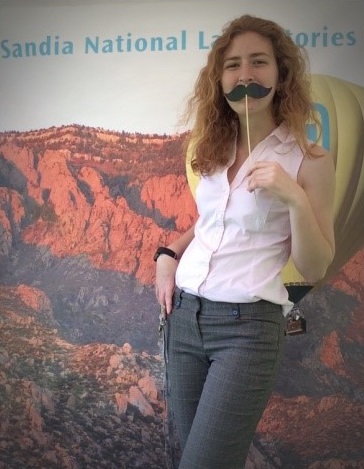 This summer I was an intern in Sandia’s Wind Technologies group in Albuquerque, New Mexico. I want to work at a national lab when I graduate and with this internship I was able to get a glimpse of what it’s like to work at one. Sandia has a highly productive, yet relaxed atmosphere, which is a difficult balance to strike in the workplace. I think it is because everyone there is very passionate about what they do; making their hard work a labor of love. Everyone I met was extremely welcoming and there were even some programs to help interns get familiar with the area.
This summer I was an intern in Sandia’s Wind Technologies group in Albuquerque, New Mexico. I want to work at a national lab when I graduate and with this internship I was able to get a glimpse of what it’s like to work at one. Sandia has a highly productive, yet relaxed atmosphere, which is a difficult balance to strike in the workplace. I think it is because everyone there is very passionate about what they do; making their hard work a labor of love. Everyone I met was extremely welcoming and there were even some programs to help interns get familiar with the area.

The region has some unique landscapes which are remarkable. I was able to hike in the Sandia Mountain range, and trained for my first half marathon by running along the Rio Grande. Petroglyph National Monument and Bandolier National Monument were amazing places to visit. The preserved ancient drawings are a window into a world long before any European Settlers set foot on this land. The climate is much different from Pullmans. It is so dry here that I once stepped onto my apartment’s balcony to watch a rain storm, only to realize amid a face full of sand that it was actually a Haboob, a small dust storm.
 I was able to learn a lot about wind technology advancements as well as research in other groups. The Labs set up tours so that we could learn about many different types of energy research that is conducted at Sandia. One of the tours was of the concentrating solar power tower. This facility is used to test different concentrating solar techniques before large commercial investments are made. Recently it has been used to thermally stress test materials for use on the nose cone of rockets during re-entry. Other areas that we toured included the Water Energy Technology Group, and the Distributed Energy Technologies Lab.
I was able to learn a lot about wind technology advancements as well as research in other groups. The Labs set up tours so that we could learn about many different types of energy research that is conducted at Sandia. One of the tours was of the concentrating solar power tower. This facility is used to test different concentrating solar techniques before large commercial investments are made. Recently it has been used to thermally stress test materials for use on the nose cone of rockets during re-entry. Other areas that we toured included the Water Energy Technology Group, and the Distributed Energy Technologies Lab.
The concentrating solar tower collector glows from all the incident radiation in the background. A half inch thick aluminium plate in the foreground has a gaping hole from where it was melted after 15 seconds in the concentrated light.
My work involved data collected from the Scaled Wind Farm Technology (SWiFT) Facility, which is a research farm with three wind turbines in Lubbock, Texas. You can go on a virtual tour of the facility here http://wbt.sandia.gov/elearning/Temp/NEO_tours/SWIFT/
My mentors were extremely helpful throughout my internship, but I was given enough independence that I was able to create my own research project which, with a fair amount of guidance, I have turned into a paper for submission to AIAA’s SciTech conference.
Earlier this summer I was able to present my research work at ASME’s Power and Energy Conference in Charlotte, North Carolina. This was a great experience networking with researchers working on similar problems and sharing my ideas about the use of neural networks for grid dispatch optimization.
I was also able to attend the Global Grand Challenges Summit in Washington DC where students from the US, China, and the UK networked with researchers from all three countries on the 14 grand challenges which are listed here http://www.engineeringchallenges.org/challenges.aspx
Even though there are 14 challenges I attended sessions that focused on making solar energy economical and restoring and improving urban infrastructure.
This summer I have gotten to travel a lot, meet a lot of new people, and explore many new places. It’s been a great adventure, but I am looking forward to making my 4th cross country road trip to get back to Pullman. I’ll be happy to be back among the green buttes and the familiar friendly faces of the CESI lab.
Congratulations Garrett!
dustin.mclartyCongratulations to Garrett Hedberg, the first alumni of CESI lab! Garret defended his thesis and earned his MS. View garret’s defense presentation here. Garrett is gainfully employed in the energy sector as a project manager at Energy Solutions in Newport Beach, CA. Good luck to garrett in his new career!
Can SOFC power Data Centers?
dustin.mclartyDid you know 60 google searches use the same energy as boiling a pot of tea?
Did you know data centers use 2% of the electricity produced in the US?
Prof. McLarty recently spoke at a conference co-hosted by Microsoft and UW focused on the application of SOFC in data centers. The conference inspired a lot of new thinking about the form factor of SOFC and transitioning from a separate entity into an integrated component of a larger system. That system may be a data center or a coffee shop. A semi-truck or a cruise ship. The possibilities are endless. The meeting was especially interesting for being driven by the possible end-customer rather than the technology developer. It gave all the SOFC researchers in the room some new ideas on what features of the technology are valuable, and how systems might be designed for the broadest set of applications. Splitting the system into re-configurable modules with plug-and-play connectivity would allow fast scaling from a couple kW to many hundreds. Click here for Prof. McLarty’s presentation.
Welcome Ashley Mills!
dustin.mclartyCESI Lab is thrilled to welcome Ashley Mills into the lab. Ashley will be pursuing a PhD in Mechanical engineering while studying the Food-Energy-Water nexus in the greater Columbia Basin. Meet Ashley in her own words here.
EAGERS is open-source
dustin.mclartyCESI lab is proud to release our first beta version of the Efficient Allocation of Grid Energy Resources including Storage (EAGERS). Version 0.1 is available on GitHub here. This platform will allow us to test different centralized and distributed control schemes for the control of micro-grids. The work thus far has been heavily focused on the efficient scheduling of resources using a new predictive control approach. Many thanks to Nadia and Haley for their hard work in getting it to this stage. A summary of what EAGERS does can be found here.


